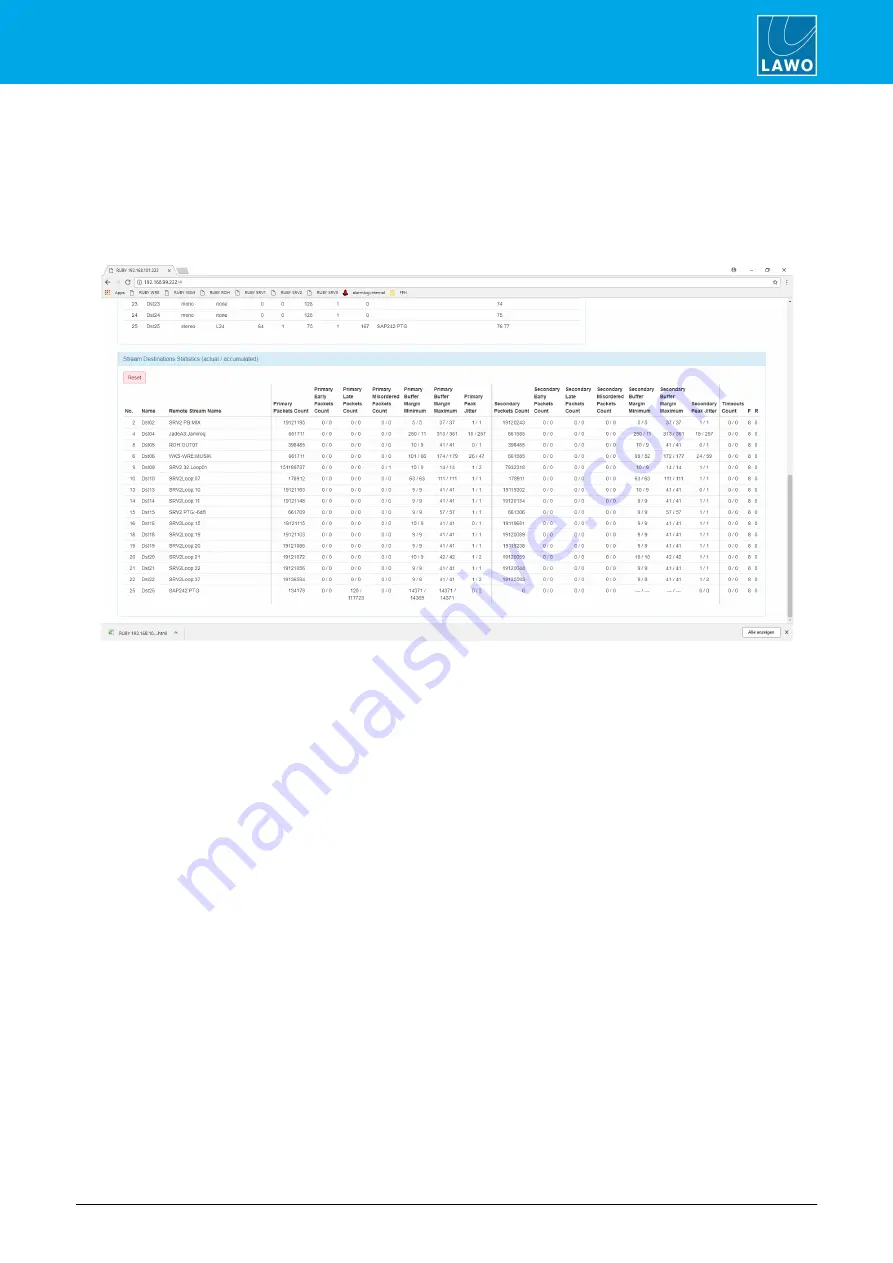
POWER CORE User Manual
Version: V6.0.0/5
403/459
20. Maintenance
The
Jitter Class
and
Time Offset
columns give special information about the latency and stability of the selected
stream.
·
Jitter Class.
There are four jitter classes, with Class 1 being for lowest-jitter devices (such as a Ruby +
Power Core), and Class 4 for high-jitter devices (a PC with a RAVENNA virtual sound card on a distant
network node). The Jitter Class value for each stream is configured using On Air Designer.
·
Time Offset.
The higher the Jitter Class, the higher the possible Time Offset which can be applied. High
Time Offset values mean high latency, which may affect stream performance.
The
Stream Destinations Statistics
section
at the bottom of the page displays a large amount of information
about the health of RAVENNA streams.
Of special importance are the
Primary Early Packets Count
and
Primary Late Packets Count
statistics. If
large numbers are seen in these columns, along with degraded stream audio performance or missing audio, the
stream should be retuned to fix the problem. If this condition is present on all streams, then retuning is indicated.
Stream statistics may be cleared by clicking the “Reset” button at the top of this section.
Re-Tuning Streams
In Administrator mode, three buttons are shown at the top of the page:.
·
Retune.
Initiates automatic adjustment for a single stream.
·
Retune All.
Initiates automatic adjustment for all RAVENNA streams.
·
Time Offset.
Allows manual entry of time offset for a single selected stream. This is an advanced
function which should only be used when instructed by Lawo Support personnel.
When streams are retuned, packet arrival statistics are cleared. If audio on a selected stream was not previously
present, it should be restored immediately. The retuning process takes approximately 20 seconds, after which
stream statistics will again be aggregated. The stream’s new Time Offset value will be shown in the Stream
Destinations List.






























